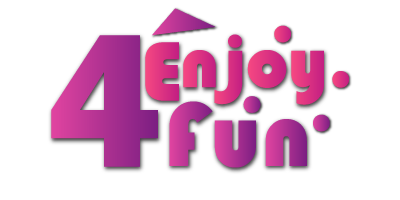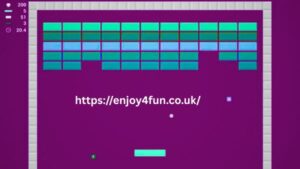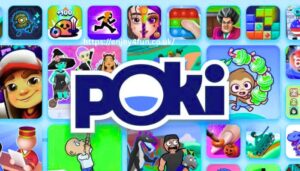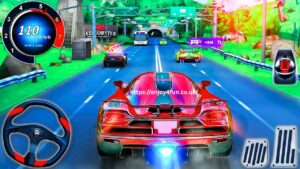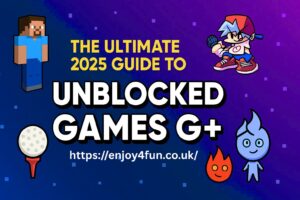There’s something oddly satisfying about breaking colorful Google Block Breaker on a screen. If you’ve ever found yourself lost in a few too many rounds of a simple mobile game while waiting in line or winding down after work, chances are you’ve played something like Block Breaker. But not many people realize that Google, the tech giant known for search engines, maps, and smart home devices, has also dipped its toes into casual gaming — and one of its most quietly addictive creations is what we now know as Google Block Breaker.
A Hidden Game with a Loyal Fan Base
Google Block Breaker isn’t advertised like other popular games. It’s not pushed on the front page of app stores or plastered across social media. Instead, it has built its popularity through word of mouth, curiosity, and Google’s own built-in platforms. You might stumble across it accidentally — maybe while searching for “play block breaker online” or during an Easter egg hunt through Google’s experimental pages.
Despite the low-key release, the game has a fanbase that stretches across the globe. Students, commuters, office workers, and even retirees have been known to lose track of time clearing levels and chasing high scores. Google Block Breaker isn’t just a game — it’s a well-designed escape pod in your pocket.
The Gameplay Simple, Yet Strategic
Block Breaker taps into a game mechanic that’s as old as arcade culture — hitting a ball with a paddle to clear a screen full of blocks. If that sounds familiar, you’re probably thinking of Atari’s classic “Breakout” from 1976. Google’s version is clearly inspired by that retro arcade energy but polished with modern design and smoother physics.
You control a paddle at the bottom of the screen. A ball launches upward, bouncing off blocks in a satisfying rhythm. Some blocks vanish with one hit, while others take multiple strikes or release power-ups — think multi-balls, lasers, magnetic paddles, or slow motion. The game balances randomness with just enough control to keep you trying “just one more round.”
Where to Find Google Block Breaker
Here’s the tricky part. You won’t find it in the Play Store under that name. Google has a history of embedding games into products, often as Easter eggs or experiments.
One popular version of Block Breaker was part of the “Atari Breakout” Easter egg hidden in Google Images. If you typed “Atari Breakout” into Google Images a few years ago, the screen would transform into a playable version of the game — blocks made from image thumbnails, a paddle at the bottom, and that bouncing ball.
Later, versions of similar gameplay appeared in Google Doodles and Chrome experiments. The Chrome Music Lab and Doodle Champion Island Games were other creative examples, though not directly related to block-breaking mechanics.
Today, many fans play lookalike versions on sites like Google Games, Coolmath, or even within classroom portals that allow simple browser-based games. They’re often minimalistic, distraction-free, and don’t require installation — perfect for quick play.
Why It Became So Popular Without Promotion
This is where things get interesting. Google Block Breaker didn’t succeed because of celebrity endorsements or flashy trailers. It thrived because of human psychology.
We crave quick wins. We want that little burst of dopamine when the last block disappears. In the age of TikTok and bite-sized content, a game that delivers instant fun in under a minute fits perfectly. And because it’s browser-based or hidden within familiar Google tools, it avoids the friction of app installs or learning curves.
Educators and parents often appreciate it too. The game is free from ads, aggressive monetization, or inappropriate content. It’s just pure, harmless fun — something increasingly rare in today’s mobile gaming world.
Real People Behind the Curiosity
The origin of Google Block Breaker isn’t attributed to one developer in the way we can credit Markus Persson with Minecraft or Dong Nguyen with Flappy Bird. Instead, Google’s creative teams — sometimes from the Chrome team, sometimes from the Doodle team — collaborate during internal hackathons and passion projects.
One notable person behind the early Doodle games that used similar mechanics is Ryan Germick, who led the Google Doodle team. While Germick isn’t the “creator” of Block Breaker specifically, his influence on gamifying Google experiences is undeniable. His team’s projects shaped how we interact with fun inside the Google ecosystem.
Block Breaker Clones and Alternatives
Since there’s no “official” Google Block Breaker app, the internet is filled with clones. Some of the most popular alternatives include:
- Bricks Breaker Quest – A mobile game with glowing reviews, precise controls, and hundreds of levels.
- Ballz by Ketchapp – A modern take with minimalist design, available on Android and iOS.
- Breakout Pro – A nostalgic version for fans of the Atari look.
- Coolmath Games’ Brick Breaker – A student-friendly browser version with decent physics and level variety.
If you want something that feels close to what Google intended, browser-based clones using HTML5 are your best bet. They’re fast, lightweight, and free.
The Cultural Legacy of Block-Breaking Games
Google didn’t invent the block breaker. The core concept dates back nearly five decades. Yet by bringing the game back — subtly, without fanfare — they reintroduced a simple joy to a new generation.
Block breaker games represent more than fun. They’re a metaphor for problem-solving. You chip away at challenges, adjust your aim, and try again. That feedback loop — fail, retry, succeed — is what keeps people coming back, whether they’re nine years old or ninety.
What We Know About The Game’s Audience
There’s no official age limit, but block-breaking games like Google Block Breaker tend to appeal across generations. Based on surveys from mobile game publishers and browser analytics, most players fall into the 18–44 age range. The split between men and women is fairly balanced, with a slight skew toward males in more competitive variants.
Some kids play during school breaks, while adults sneak in a game during coffee or commute. Grandparents play it on tablets. Unlike shooters or complex simulations, block breaker games are accessible. They don’t ask much from you, and they reward attention spans of any length.
Social Media and the Quiet Buzz
You won’t see celebrities tweeting about Google Block Breaker. But Reddit threads, YouTube shorts, and TikTok clips do pop up from time to time — usually titled things like “Secret Google Game You Didn’t Know Existed” or “Best Hidden Browser Games.”
There are also communities of nostalgic gamers who share records, challenge mods, or try to “speedrun” levels in the fewest paddle bounces. Some even livestream their attempts or break down strategies on platforms like Twitch and Discord.
Net Worth and Commercial Impact
Since there’s no paid version of the game, Google doesn’t generate direct revenue from Block Breaker. But let’s be clear — Google isn’t in the casual game market for money. These types of games serve other purposes: keeping users engaged on Google platforms, collecting anonymous UX data, or just spreading joy.
If we talk about the net worth of “Google Gaming” as a whole — including Stadia (now retired), Play Pass, YouTube Gaming, and Chrome Experiments — the indirect value runs in billions. Google doesn’t release specific figures for Block Breaker, but its massive web traffic and Chrome user base give even a small embedded game enormous reach.
Can You Play It Today?
Absolutely. While the original “Atari Breakout” Easter egg might not always work (Google disables them from time to time), you can still find mirror versions or similar block-breaking experiences on:
- Google Games (gamesnacks.withgoogle.com)
- Coolmath Games
- Itch.io and GitHub clones
- Online Game Archives (HTML5, JavaScript-based)
Pro tip: Use the search phrase “Block Breaker Google clone” and you’ll land on a playable version within a few clicks.
Final Thoughts Why We Keep Coming Back
Block Breaker isn’t flashy. It’s not multiplayer. It doesn’t have loot boxes or unlockable skins. But it doesn’t need those things. What it offers is timeless — a little joy, a mental break, and a reminder that sometimes, the simplest games are the most satisfying.
